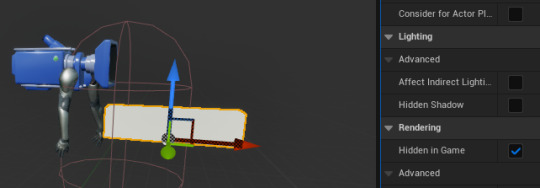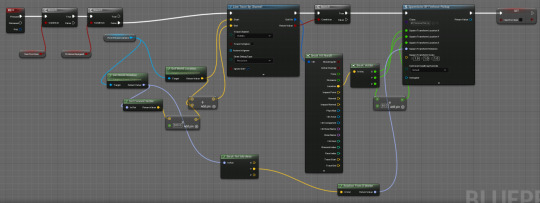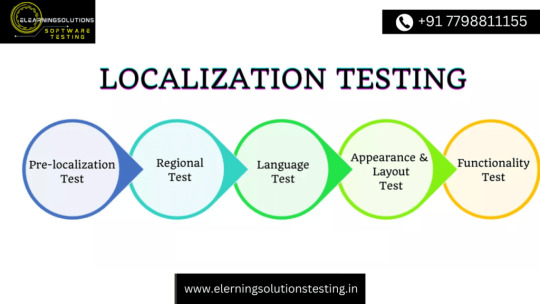#techtest
Explore tagged Tumblr posts
Text
5 Best Optoma Projectors in 2024

Discover top-notch visual experiences with the 5 Best Optoma Projectors! From vivid colors to crisp clarity, these projectors redefine your viewing pleasure. Whether it's movies, presentations, or gaming, Optoma's cutting-edge technology delivers unmatched performance. Explore a world of superior brightness, contrast, and resolution, elevating your every viewing moment. Release the power of immersive visuals with Optoma – where innovation meets excellence. Upgrade your entertainment or work setup today!
#optomaprojectors#VisualExcellence#Techinnovation#Upgrade#top5projectors#optoma#projectorreview#techtest#projector#myprojectorguide
0 notes
Text
Round display EYESPI tester is a go! 👁️🔍
This 1.3" round TFT display will be in the shop soon, thanks to this tester, which lets us quickly verify all functionality: We're reading a display bitmap off of the SD card, displaying it, and then pulsing the backlight. We do this all through the EYESPI connector https://www.adafruit.com/search?q=eyespi and this one is passing just fine. After we package the display, we can stock it in the shop!
#rounddisplay#tftdisplay#eyespi#electronics#hardwaretesting#adafruit#makercommunity#techgadgets#displaytesting#productlaunch#sdcard#backlight#innovative#techtools#hardwaredesign#electronicsengineering#circuits#techgear#makerspace#diyelectronics#engineeringtools#techinnovation#productdevelopment#hardwaretech#techtesting#roundtft#futuretech#smallbiz#techproducts#newtech
14 notes
·
View notes
Text
What is Software Testing Life Cycle?
The Software Testing Life Cycle (STLC) is a structured process that defines the various stages involved in testing software to ensure its quality, functionality, and reliability. It’s a systematic approach that guides testers and development teams through the steps needed to identify defects, validate functionality, and deliver a product that meets user expectations. Understanding the Software Testing Life Cycle is essential for anyone involved in software development, from testers and developers to project managers and stakeholders.
In this blog, we’ll explore the phases of the Software Testing Life Cycle, its importance, and how each stage contributes to delivering high-quality software. We’ll break down the process into clear, actionable steps and discuss best practices to make the most of this framework.
Why is the Software Testing Life Cycle Important?
Software testing is a critical component of the development process, ensuring that applications perform as intended and are free from critical bugs. The Software Testing Life Cycle provides a roadmap for testers to follow, helping to:
Ensure Quality: Identify and fix defects before the software reaches end users.
Reduce Risks: Minimize the chances of failures in production, which can be costly and damaging to a brand’s reputation.
Improve Efficiency: Streamline testing efforts by following a structured approach.
Meet Requirements: Validate that the software aligns with user needs and business goals.
By adhering to this cycle, teams can catch issues early, save time and resources, and deliver a reliable product.
Phases of the Software Testing Life Cycle
The Software Testing Life Cycle consists of several distinct phases, each with its own objectives, activities, and deliverables. Below, we’ll dive into each stage to understand its role in the process.
1. Requirement Analysis
The first step in the Software Testing Life Cycle is requirement analysis. During this phase, testers review the software requirements specification (SRS) documents, user stories, and other project documentation to understand what the software is supposed to do. This stage involves:
Identifying Testable Requirements: Determine which features and functionalities can be tested.
Clarifying Doubts: Collaborate with stakeholders, developers, and business analysts to resolve ambiguities.
Defining Scope: Establish the boundaries of testing, including what will and won’t be tested.
Deliverables: A requirement traceability matrix (RTM) is often created to map requirements to test cases, ensuring nothing is overlooked.
2. Test Planning
Test planning is the backbone of the Software Testing Life Cycle, where the strategy and approach are defined. This phase involves creating a detailed test plan that outlines:
Objectives: What the testing process aims to achieve.
Scope: The features and functionalities to be tested.
Resources: The tools, environments, and team members needed.
Timeline: Deadlines and milestones for testing activities.
Risk Management: Identifying potential risks and mitigation strategies.
Best Practice: A well-documented test plan ensures everyone is aligned and sets clear expectations for the testing process.
3. Test Case Design
Once the plan is in place, the next step is designing test cases. This phase focuses on creating detailed, step-by-step scenarios to verify the software’s behavior. Key activities include:
Writing Test Cases: Develop clear, concise test cases based on requirements.
Selecting Test Data: Prepare data sets to simulate real-world scenarios.
Choosing Techniques: Use methods like boundary value analysis, equivalence partitioning, and decision tables to ensure comprehensive coverage.
Deliverables: Test cases, test scripts, and test data are prepared, ready for execution in the next phase.
4. Test Environment Setup
A stable test environment is crucial for accurate results. This stage involves setting up the hardware, software, and network configurations needed to mimic the production environment. Key tasks include:
Configuring Hardware: Ensure servers, devices, and other equipment are ready.
Installing Software: Set up the application, databases, and testing tools.
Verifying Readiness: Check that the environment is stable and accessible to the testing team.
Tip: A well-configured environment prevents false positives and ensures reliable test outcomes.
5. Test Execution
Test execution is where the action happens. Testers run the test cases designed earlier, comparing actual results with expected outcomes. This phase includes:
Running Tests: Execute manual and automated tests as per the plan.
Logging Defects: Document any bugs or issues found during testing.
Retesting: After developers fix defects, retest to confirm the issues are resolved.
Deliverables: Test logs, defect reports, and updated test cases are produced during this stage.
6. Defect Tracking and Management
Defects discovered during test execution need to be tracked and managed effectively. This phase involves:
Prioritizing Issues: Classify defects based on severity and impact (e.g., critical, major, minor).
Reporting Bugs: Use tools like JIRA, Bugzilla, or Trello to log and track issues.
Collaborating with Developers: Work closely with the development team to ensure timely resolution.
Goal: The aim is to reduce the number of defects and ensure the software meets quality standards.
7. Test Closure
The final phase of the Software Testing Life Cycle is test closure, where the testing process is evaluated and documented. Key activities include:
Analyzing Results: Review test outcomes to determine if objectives were met.
Documenting Lessons Learned: Identify what went well and areas for improvement.
Preparing Reports: Create a test closure report summarizing coverage, defects, and overall quality.
Deliverables: A comprehensive test closure report is shared with stakeholders, marking the end of the cycle.
Best Practices for the Software Testing Life Cycle
To maximize the effectiveness of the Software Testing Life Cycle, consider these best practices:
Start Early: Begin testing during the requirement analysis phase to catch issues early.
Automate Where Possible: Use automation tools for repetitive tests to save time and improve accuracy.
Communicate Clearly: Maintain open communication with developers, stakeholders, and the testing team.
Prioritize Testing: Focus on high-risk areas and critical functionalities first.
Review and Refine: Continuously update test cases and plans based on feedback and changes in requirements.
Tools Used in the Software Testing Life Cycle
Various tools support the Software Testing Life Cycle, making each phase more efficient. Some popular ones include:
Test Management: Tools like TestRail and Zephyr help manage test cases and track progress.
Automation: Selenium, QTP, and JUnit are great for automating repetitive tests.
Defect Tracking: JIRA, Bugzilla, and Trello streamline bug reporting and management.
Performance Testing: Tools like JMeter and LoadRunner test the software’s speed and scalability.
Choosing the right tools depends on your project’s needs, budget, and team expertise.
Challenges in the Software Testing Life Cycle
While the Software Testing Life Cycle is effective, it’s not without challenges. Common issues include:
Unclear Requirements: Ambiguous or incomplete requirements can lead to missed test cases.
Time Constraints: Tight deadlines may limit thorough testing.
Resource Limitations: Lack of skilled testers or proper tools can hinder progress.
Changing Requirements: Frequent changes can disrupt the testing process.
Solution: Address these by improving communication, prioritizing tasks, and using agile methodologies to adapt to changes.
Conclusion
The Software Testing Life Cycle is a vital framework for delivering high-quality software. By following its structured phases—requirement analysis, test planning, test case design, environment setup, test execution, defect tracking, and test closure—teams can ensure their applications are reliable, functional, and user-friendly. Adopting best practices and leveraging the right tools can further enhance the process, helping you overcome challenges and meet project goals.
#SoftwareTesting#TestingLifeCycle#STLC#SoftwareQuality#QualityAssurance#SoftwareDevelopment#TestingProcess#QATesting#SoftwareTesting101#TechTesting
0 notes
Text
Tech Testing: Evaluating the success of my tests
After testing and consideration, I'd say both the fire hose and dialogue system were great success as prototypes! I'm thinking of other ways to tackle the fire hose, though having this prototype as a backup definitely helps and gives me a second option if all else fails.
I'm now going to begin development on a seperate, new UE5 project as for a blank slate, what I may copy over from my tech tests is the dialogue system I made. I can then modify this as I desire.
0 notes
Text
What is the Scope of IoT Testing?
IoT testing involves evaluating the functionality, security, and performance of Internet of Things devices and systems. With the rapid growth of IoT, testing becomes critical to ensure seamless integration and optimal performance across various devices. This guide explores the scope of IoT testing, including challenges and best practices for ensuring quality in connected devices and smart systems.

#IoTTesting#InternetOfThings#TechTesting#IoTDevices#QualityAssurance#TechTrends#IoTInnovation#SoftwareTesting#DeviceTesting#ConnectedSystems
0 notes
Text
0 notes
Text
some disjointed thoughts about Nemesis and Melinoë (and Hecate and mommy issues)
I’ve been having lots of thoughts about the dynamic between Nemesis and Melinoë, and by extension both of their dynamics with Hecate. Hades 2 technical test spoilers to follow, obviously
First let’s talk about Hecate and Melinoë. Hecate raised Melinoë! She cares about her! But their relationship is not healthy by any means. Hecate is the only parent Melinoë has ever known, but out of loyality to Persephone she refuses to be Melinoë’s mother, and very harshly pushes back on the idea when Melinoë even suggests that she views Hecate in a maternal way. (Notice the difference to how Nyx treats Zagreus, and says he will always be her child.) Hecate raised Melinoë in a very militaristic way, for the obvious reason that they are at war, but isn’t it kind of nuts how even when playing hide and seek with very small child Melinoë, she frames their playtime in the context of hunting and killing titans? Enter Melinoë’s desperate need for approval. Yeah, it’s cruel when Nemesis says that killing Chronos “isn’t personal enough” for Mel. Unfortunately, she is right. Throughout the techtest, Melinoë continuously questions herself and other characters on how to keep up the motivation to save a family she has never known. She struggles deeply with this. My impression is that at this point, she is fighting To Make Hecate Happy. She is constantly vying for (and getting!) her teacher’s approval. She doesn’t question Hecate almost ever, and that’s in fact Bad for Melinoë. Melinoë needs to kill Chronos for Herself, and she’s simply not there yet.
Now, I noticed two things that made my alarm bells ring in regards to Melinoë, Nemesis and Hecate. Nemesis very clearly cares about Melinoë, even her digs at Melinoë are poorly disguised concern for her. She’s worried about Melinoë being sent out on her own by Hecate, she thinks Melinoë is a pushover to Hecate (she’s right), and she lets Melinoë call her “Nem”, even when they are fighting, without a comment. Meanwhile Hecate Hates Nemesis. She cannot deal with Nemesis questioning her judgement and expects complete obedience from her because of a pact she made with Nyx, while at the same time wishing she hadn’t made the pact because she cannot stand Nemesis to the point of wanting to throw her out of the encampment completely. Now this sucks for Nemesis of course, but what concerns me More, is how Hecate speaks to Melinoë about Nemesis.
Hecate actively discourages Melinoë from even cordially talking to Nemesis, to the point of acting disgusted when Melinoë uses her keepsake. Odysseus asks Melinoë to “smooth things over” between Nemesis and Hecate, implying Melinoë has in the past had to go between them. Hecate doesn’t respect Nemesis as a person, because Nemesis doesn’t respect her as an authority (nemesis still obeys Hecate, just not in a way Hecate likes)
I’ll write up these thoughts in more detail at some point but for now I want to leave you with this thought that made me sad: Characters constantly tell Melinoë she looks just like her mother and express pity and concern for her. Have you seen Nemesis? Do you think anyone has told Her how she looks like her mother? Of course Nemesis needs to keep reiterating her stakes in this struggle, because Hecate sure isn’t acknowledging them.
#not touching on how nemesis doesn’t think she deserves happiness#saving that for another day for now#hades 2#hades ii#nemesis#Hecate#melinoe#melinoë#hades nemesis#hades hecate#hades melinoe#hades meta#hades 2 meta#melnem
285 notes
·
View notes
Photo

Excitement is building as Arc Raiders is officially set to launch this October! Fans of the extraction shooter have been eagerly awaiting a release date, and now they finally have one. Embark Studios announced that the game will arrive on October 30, 2025, for PC, PS5, and Xbox Series X/S—expanding on the earlier Tech Test with new content and improvements. This game combines polished gameplay, a compelling character design, and a vibe reminiscent of classic PUBG — promising a memorable experience for shooter lovers worldwide. The developer maintains a great relationship with Summer Game Fest, highlighting their commitment to delivering quality. Are you ready to gear up and survive the next wave? Don’t miss out—mark your calendars! Which platform are you most excited to play Arc Raiders on? Let us know below! #ArcRaiders #SummerGameFest #GamingNews #PCGaming #PS5 #XboxSeriesX #ExtractionShooter #GameRelease #TechTest #VideoGames #UpcomingGames #EmbarkStudios
0 notes
Text
Technical Research- What I will use for these and What I found
(This was kept in Drafts and all posted as one as I felt it made most sense)
1/3/25:
The software I will be using is Unreal Engine and Photoshop because this is what I am most experienced in as I have used it in all previous projects. This doesn't really evenly compare to others as I haven't used them and Unreal is what I have been trained in and with Photoshop it is the most universal as you can do pixel art and drawings although for 3D I would use Magica voxel but as my Idea 2 is a sidescroller I will use photoshop for the prototype.
6/3/25:
In my technical research for my prototyping I didn't really need tutorials as I knew roughly what I was doing with 1, 2 and 3 and I had help from a teacher for some parts of 4 as it was just simple parts like finding the car blueprint etc.
I undertook 4 techtests all proving to be helpful as 1 showed me that making a zoning system is quick and reliably works meaning the main aim of the game is viable so the game could work. 2 showed me that with my art skillset which isn't brilliant that I can actually draw to the dark, mystical themes I want meaning that the game is viable and with 3 I looked into gun effects and bananas as a gun although this proved viable I'm not sure whether it fits the survivalist game idea very well as it seems to comedic and I think the two genres would just clash and with 4 it just showed me learning these mechanics for vehicles is just too complex and I will run out of time and the project is too ambitious so this is not a viable option.
0 notes
Text
BenQ GP500 4K HDR LED projector review

Discover the magic of entertainment with the BenQ GP500 4K HDR LED projector! 🌟 Immerse yourself in stunning visuals and vibrant colors. Our review breaks down the features, performance, and why this projector is a game-changer for your home cinema. Elevate your viewing experience with the GP500! Read our in-depth review now. 🎬🔍
0 notes
Text
Wooo, this one is for all of our fans of fans.

We got some 5V USB-cable fan samples, and we're testing them out. These are handy when you need air cooling or to add motion to lightweight robotics. They come in various sizes, from petite 4cm to bountiful 9cm, and have two mesh screens to keep wires and fingers from getting caught in the blades.
#adafruit#usbfan#aircooling#electronics#makerprojects#robotics#diycooling#techgadgets#engineeringtools#makerspace#techtesting#innovation#fanatics#hardwarehacks#diyelectronics#portablefan#smartgadgets#usbtech#airflow#fanprojects#usbtools#cooltech#tinkerers#gadgettesting#roboticsprojects#coolingfan#techdesign#engineeringlife#aircoolingfans
17 notes
·
View notes
Text
🌐 Network Emulator Market: $1.5B to $4.2B by 2033 – Connection Perfected 📶
Network Emulator Market plays a critical role in ensuring the performance and reliability of applications and devices by replicating real-world network conditions. Through advanced hardware and software tools, network emulators simulate behaviors such as latency, bandwidth constraints, and packet loss, empowering organizations to test, develop, and optimize their solutions.
To Request Sample Report : https://www.globalinsightservices.com/request-sample/?id=GIS24576 &utm_source=SnehaPatil&utm_medium=Article
Key Market Trends:
The demand for 5G network testing is driving innovation in network emulation, ensuring seamless integration and performance for next-generation connectivity.
Cloud-based network emulation is gaining traction, offering scalability and cost-efficiency for businesses conducting remote testing.
AI-driven network emulators are emerging, enhancing predictive analysis and enabling smarter testing environments.
Applications Across Industries:
Telecommunications: Optimize network performance and ensure uninterrupted user experiences.
IT and Software Development: Test the robustness of applications in diverse network scenarios.
Automotive: Simulate network conditions for connected and autonomous vehicles, ensuring safety and efficiency.
Regional Insights:
North America leads the market, supported by technological advancements and extensive R&D activities.
Asia-Pacific is witnessing rapid growth, driven by increased adoption of 5G, IoT, and connected devices.
Europe focuses on innovation in network emulation for automotive and industrial applications.
Market Segmentation Highlights:
Tools: Hardware Emulators, Software Emulators
Technologies: AI, Cloud, IoT, 5G, Virtualization
End Users: Telecom Operators, IT Firms, Automotive Manufacturers
The Future of Network Emulation
As connectivity continues to evolve, the need for sophisticated network emulators will grow. These tools will be instrumental in ensuring the seamless performance of emerging technologies in diverse and dynamic environments.
#NetworkEmulator #5GTesting #NetworkSimulation #IoT #CloudEmulation #AI #TelecomSolutions #ITTesting #SoftwareDevelopment #ConnectedVehicles #LatencySimulation #BandwidthOptimization #DigitalInnovation #FutureOfNetworks #TechTesting
0 notes
Text
Tech Testing: Fire hose system
youtube
For the fire hose, I wanted to tackle the system of having it in your inventory with a variable which can be checked when trying to equip, whilst not the best for a large inventory system, I'll only be having a few items and so I feel this is the most efficient method.
Within the first person character, I created three variables named as follows

Pick-up Actor
To first implement everything, I needed to create an actor that allowed the character to pick up and equip the hose, to achieve this I firstly created a small cuboid in place of a fire-hose model within my first person character, and positioned it in the viewport setting it to hidden in game.

Then, I created my actor, placed a small cube with text in the viewport and made sure the collision was overlap all dynamic, within the event graph I created a very simple string of code. When overlapped, the actor checks if the other is the character, if so it sets the variable has fire hose to true and removes the pickup actor.

Firehose Logic
I began by creating an action mapping to deal with all of the interactions within this tech test, It will used a sequenced state machine with variables which essentially means it will check if each action is being committed, if not it will move on and check the next.

The state machine itself is shown here, note that only the firehose logic is in the sequence as it's the main mechanic I'm including within my tech test

The code works by checking if LMB is pressed using the variable, and if so if the player has the firehose, and the firehose is equipped, it spawns what I've used as a placeholder projectile variable at the location of the far end of the model filling in for the hose.

The code behind equipping the firehose shown above works by checking if the player has the firehose, if so using the 1 key it will toggle the visibility in the viewport of the model and change the equipped variable to true.

Lastly, the logic behind being able to drop the hose and place it back on the ground consists of using the q key to check whether the fire hose is equipped and if the player has it, if the fire hose is NOT equipped you are able to drop it, and so it places the pickup actor using a line trace from the camera similar to the interaction system and sets the has fire hose variable to false.
Altogether, the full block of code that controls everything about the fire hose assembles to look like this within the player character.

0 notes
Text
Localization Testing and International Testing
Are you confused? An internationalized Product/application design is the one that can accommodate localized content such as characters in non-western letters, double-byte languages, an ability for text to expand as in European languages and contract as in Asian languages, display Unicode characters and have a database that supports Unicode characters etc. read more

#LocalizationTesting#InternationalTesting#SoftwareTesting#GlobalTesting#Localization#Internationalization#QualityAssurance#TestingForGlobalMarkets#QA#TechTesting
0 notes
Text
Network emulator market: $1.5B in 2023 to $4.2B by 2033, CAGR: 10.8%.
Network Emulator Market : Network emulators are game-changers for testing and optimizing network performance in real-world scenarios. By simulating various network conditions like latency, packet loss, and bandwidth constraints, these tools enable developers and IT teams to evaluate applications, devices, and protocols before deployment. Whether it’s stress-testing a new app under high traffic or ensuring seamless performance in different geographical regions, network emulators provide invaluable insights. They are essential for building robust and resilient networks, minimizing downtime, and enhancing the user experience in a rapidly evolving digital landscape.
To Request Sample Report : https://www.globalinsightservices.com/request-sample/?id=GIS24576 &utm_source=SnehaPatil&utm_medium=Linkewire
With the rise of 5G, IoT, and cloud-based applications, the demand for network emulators has skyrocketed. Modern emulators are equipped with advanced features such as real-time analytics, customizable scenarios, and support for complex multi-network environments. These capabilities make them indispensable for industries ranging from telecommunications and gaming to finance and healthcare. By replicating real-world conditions in a controlled setup, network emulators empower organizations to innovate confidently, optimize performance, and maintain reliability in the face of dynamic network challenges. #NetworkEmulator #TechTesting #NetworkPerformance #IoT #5GTechnology #DigitalInnovation #CloudApplications #TelecomSolutions #RealWorldTesting #AppOptimization #TechInfrastructure #LatencyTesting #NetworkResilience #ITSolutions #FutureOfConnectivity
0 notes
Text

Successfully completed the installation of two Cisco C9300 switches, including the meticulous connection of all stack cables at the back, for a client in Windsor, ON. Our expert team conducted comprehensive testing and provided full support to ensure everything operates seamlessly. Count on us for reliable network solutions! Every project is critical to be completed on time to avoid disruptions to your operations. We understand your business needs trusted brains for minimum downtime. We won't let you down, give us a shout for the best on the ground planning. Contact us today https://xllentech.com/ #NetworkInstallation #Switches #ITSupport #TechTesting #DataCenterSolutions
0 notes